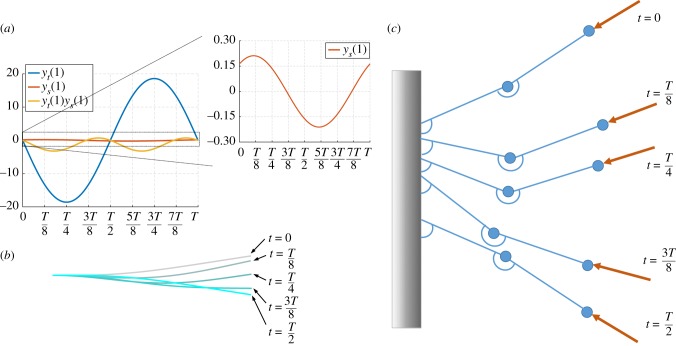Figure 7.
Non-variational aspects of flapping motion. (a) Time evolution of the tip velocity, yt(1), its derivative with respect to the arclength, ys(1) (zoomed in the inset) and their product, yt(1)ys(1) over the period of oscillation T for σ = 37.8. The term yt(1)ys(1) changes sign four times over a cycle: the presence of the follower force both removes and injects energy into the system, giving rise to self-sustained, periodic oscillations. (b) Filament configuration over a half-period. (c) Schematic of the two-link model at different times over a half-period for Σ = 3.5. The follower force compresses the two-link structure and the links are pushed downwards (0 < t < T/4). Then, the first link reaches its lowest point (i.e. highest restorative moment) and stops moving, while the second link keeps rotating (t = 3T/8). By doing so, the follower force, which has followed the second link, exerts a lower moment and the restorative effect becomes predominant. Hence, the first link moves upwards and the second link downwards until stopping and inverting its motion (t = T/2). The cycle then repeats.

